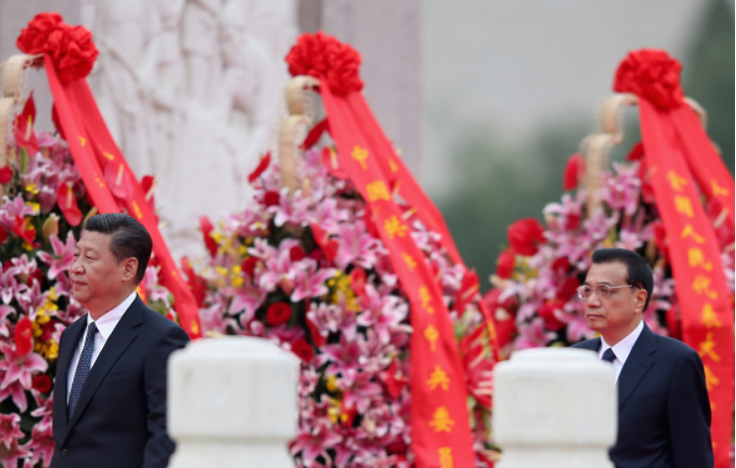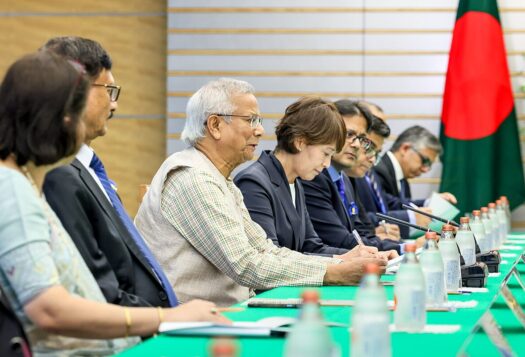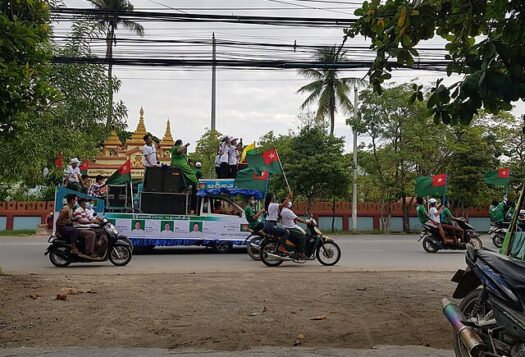
Several days after the Chinese and Indian governments announced the beginning of the disengagement process along the Line of Actual Control (LAC), Chinese media outlets published a deluge of articles and videos highlighting a crisis whose de-escalation was already underway. In a highly atypical move, the government reported casualty figures from a foreign conflict, eulogizing four soldiers who died during June 2020’s clash in the Galwan Valley amidst the 10-month long standoff.
Such a media surge is important because it marks the most concentrated and deliberate state-directed media campaign related to the standoff since its initial outbreak in the spring, which at first received relatively muted coverage. Understanding the media campaign’s content and timing helps explain what, precisely, its objective is. Contextualized within its domestic political circumstances—specifically, upcoming events such as the 100 year anniversary of the CCP and the annual National People’s Conference, and most importantly, broader trends in the state’s management of its censorship apparatus—the Ladakh standoff was likely seen by Beijing as an opportune instrument to foster nationalist sentiment during a politically salient moment.
A Patriotic Media Blitz
On February 19, the PLA Daily published “Approaching a New Era, Soldiers Defend the Border: Heroes Stand Tall in Karakoram,” a detailed account of several border soldiers’ experiences during the Galwan clash. Notably, this marked the first time Chinese official sources both acknowledged and specified the number of Chinese casualties from June’s deadly encounter. A variety of news outlets republished the article, or slight variations, culminating in a media blitz that propelled the topic into public consciousness only days after an initial disengagement agreement was reached. In addition to the millions of views garnered by these articles, the topic trended on Weibo for several days (along with related hashtags such as “not an inch of our country’s mountains and rivers can be lost”), with millions of netizens extoling the four martyrs precisely as troops began the disengagement process along the LAC. Several days later, reports emerged that at least seven people, including a famous Nanjing blogger who questioned the validity of the state’s reporting, were arrested for “defaming heroes and martyrs.”
“[The PLA Daily article] refers to ‘the foreign army’ or ‘relevant foreign troops’ rather than explicitly labeling India. To be sure, Chinese readers are well aware that the standoff took place with Indian soldiers, but this rhetoric suggests the government intentionally decided to emphasize the soldiers’ martyrdom over details of the standoff and India as an adversary.
Aside from its timing, the PLA Daily article’s content is notable for several reasons. First, it refers to “the foreign army” or “relevant foreign troops” rather than explicitly labeling India. To be sure, Chinese readers are well aware that the standoff took place with Indian soldiers, but this rhetoric suggests the government intentionally decided to emphasize the soldiers’ martyrdom over details of the standoff and India as an adversary. In other words, this language subtly focuses attention on the heroes and martyrs, and less on India and the standoff’s context.
Second, the PLA Daily article reads like a dramatic vignette chronicling month-by-month events from April through June, describing the personal backgrounds of several soldiers, including quotes and reflections from their families. Although it represents the Chinese government’s interpretation of the facts of the ground, the article explicitly emphasizes individual narratives over the broader context of the standoff. For example, excerpts from soldiers “battle diaries” such as: “We [soldiers] mark the boundary of our motherland. Every inch under our feet is our motherland’s territory,” ostensibly written by border soldier Xiao Siyuan, fix the reader’s attention on sympathetic border soldiers instead of the conflict’s historical or political details.
Indeed, a majority of Chinese readers did find the article deeply moving. Hashtags supporting the article garnered over 1.4 billion views, while sympathetic messages flooded the comments. To foreign analysts, the legitimacy of excerpts from soldiers’ battle diaries may seem dubious—and it should: unearthing convenient and deeply patriotic “quotes” from personal journals is familiar party practice, most notably in the construction of China’s most famous semi-mythical martyr, Lei Feng. Yet to many Chinese citizens, the article and video’s language is neither shocking nor theatrical. Besides for the fact that decades of patriotic education have systematically imbued individuals with fluency in patriotic lingo, this type of rhetoric is commonly recycled through TV shows, speeches, and official media. Most readers were less concerned with the details of the standoff than they were sympathetic to the plight of the soldiers, who are perceived as dutifully following orders to defend their territory in spite of harrowing conditions. It is this element of the media campaign—that it is overwhelmingly focused on individuals and domestic-facing patriotism—that may best explain its objectives.

Timing the Media Campaign
Aside from the article’s content, its timing remains significant: Why would the government launch a media campaign after disengagement was announced? Comparatively, in the midst of 2017’s eight-week long standoff on the Doklam plateau, the government released a White Paper to delineate its formal position. If Beijing’s objective was to similarly communicate its official position, why wait until after disengagement negotiations concluded, and why communicate that position through a broad media campaign rather than a targeted government statement?
Three factors likely guided the media campaign’s timing. First, it allowed the Chinese government to define its interpretation of the standoff without influencing ongoing disengagement negotiations. Second, the government could clarify and respond on its own terms to recent Russian reports claiming over forty Chinese casualties. Finally, the standoff’s disengagement coincides with a domestic political environment primed for precisely this type of patriotic media campaign. In this way, the standoff and its accompanying reporting fit neatly within a larger domestic political trend.
When asked explicitly about the article, a Ministry of Defense spokesperson replied that the aim was to clarify the narrative for the public, as India had “distorted the truth [and] misled international public opinion.” In this context, to “clarify” is to declare China’s position, defining how a domestic audience should interpret an event after its conclusion.
Providing a ready-made interpretation of recent history is a common and increasing trend in CCP behavior. Campaigns against “historical nihilism”—which refers to the critique or questioning of Party-written history—have been steadily increasing throughout Xi Jinping’s tenure and seek to ensure that such a Party-sanctioned narrative is not only passively accepted, but also actively promoted by individuals. In this context, a media blitz which lionizes patriotic soldiers reminds citizens to be grateful for the party and army, underscores a sense of national unity, and implies that they, too, can be martyrized.
Campaigns against “historical nihilism”—which refers to the critique or questioning of Party-written history—have been steadily increasing throughout Xi Jinping’s tenure and seek to ensure that such a Party-sanctioned narrative is not only passively accepted, but also actively promoted by individuals.
In addition to the decade-long campaign against historical nihilism, 2021 also marks the 100th anniversary of the CCP. A mobilization campaign to study party history is already (and unsurprisingly) underway. Politically sensitive anniversaries tend to feature government media campaigns, or at the very least correlate with a notable increase in patriotic messaging. Anniversaries serve as “self-legitimating rituals” for the party to inspire nationalist loyalty, and are commonly employed. For example, the recent propaganda campaign surrounding one of the Party’s core goals, eradicating extreme poverty, is a clear example of the CCP’s long-standing objective to decrease the flow of critical voices in both traditional and social media, while increasing the supply of state-sanctioned messaging.
Conclusion
Within the context of China’s domestic political environment—specifically the 100 year anniversary of the CCP, sustained campaigns against historical nihilism, increased patriotic messaging, and ongoing politically significant events such the annual Two Sessions—China’s media campaign after the Ladakh crisis should be interpreted not as a particular sensitivity to China-India border issues, but rather as useful tool in service of larger domestic political trends. In this framework, vilifying India is an acceptable part of that equation, but not the campaign’s underlying aim.
The CCP is well-versed in utilizing its media apparatus to communicate strategic narratives, and given the timing of disengagement, the event was likely seen as an opportune moment to pursue domestic political objectives through a related media campaign. While state sponsored media should not be confused with authoritative government opinion, the media campaign is nonetheless the clearest depiction of the Chinese government’s acknowledged reality, on which it will likely operate during future negotiations or contingencies.
***
Image 1: Wilson Loo Kok Wee via Flickr
Image 2: Feng Li via Getty Images


